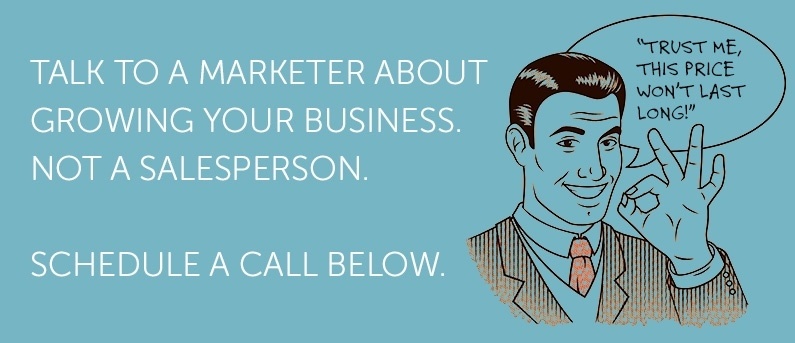In recent years, the metaverse has become a buzzword in tech, entertainment, and—most recently—marketing. As immersive virtual environments continue to evolve, businesses are faced with the challenge (and opportunity) of understanding how this new frontier can shape the future of brand engagement. A recent Forbes article states that the market value of the metaverse is predicted to rise to $800 billion by 2024. So how do brands find their way to engaging with prospects and consumers in this growing digital space?
In this post, we’ll explore what the metaverse is, how it’s being utilized by innovative brands, and why marketers should be paying attention to this exciting digital landscape.
What is the Metaverse?
The metaverse refers to interconnected, immersive digital environments where users can interact with one another and digital objects in real-time, often through avatars. While still in its infancy, the metaverse is often described as a blend of augmented reality (AR), virtual reality (VR), and 3D virtual spaces where users can socialize, shop, play games, and work.
Platforms like Decentraland, Roblox, and Meta's Horizon Worlds are some of the pioneers in this virtual realm, enabling users to create their own experiences and environments. For brands, the metaverse is a canvas of endless opportunities—where engagement, commerce, and entertainment can come together in a single, immersive experience.

Why Should Brands Care About the Metaverse?
Brands that are early adopters of the metaverse stand to benefit from new, creative ways to engage with consumers. Here’s why:
-
Immersive Experiences Build Stronger Connections The metaverse allows brands to create highly immersive and interactive experiences that go far beyond traditional forms of marketing. Imagine hosting a virtual product launch where customers can walk through a 3D showroom, try on virtual clothing, or test out a digital version of a product—all from the comfort of their homes.
-
Reach a New Generation of Consumers Generation Z and millennials, who have grown up in digital-first environments, are the core demographic for metaverse engagement. These consumers expect brands to meet them where they are—on platforms that offer dynamic, interactive experiences. By establishing a presence in the metaverse, brands can tap into this tech-savvy audience.
-
Limitless Creative Opportunities In the metaverse, the limitations of the physical world don’t apply. Brands can create entirely new, branded environments, games, and experiences that push the boundaries of creativity. Nike’s Nikeland on Roblox, for example, allows users to play sports and compete in challenges in a virtual space inspired by the brand.
How Brands Are Already Thriving in the Metaverse
While the metaverse may feel futuristic, many major brands are already seeing the potential and jumping in headfirst:
Gucci Garden on Roblox
Gucci created a virtual exhibit on Roblox to celebrate its 100th anniversary. In the Gucci Garden, users could explore rooms inspired by the brand's history, purchase limited-edition virtual accessories, and immerse themselves in Gucci's iconic aesthetic.

SOURCE: Gucci
Coca-Cola’s Virtual Collectibles
Coca-Cola released a series of limited-edition NFTs (non-fungible tokens) as part of a metaverse campaign, which included virtual wearables and experiences. The campaign also included a charity auction, demonstrating that metaverse engagement can be purpose-driven and meaningful.

SOURCE: Coca-Cola
Adidas Into the Metaverse
Adidas has taken steps into the metaverse by collaborating with NFT creators like Bored Ape Yacht Club and developing exclusive digital products. This strategy has helped the brand connect with an emerging market of NFT collectors and digital enthusiasts.

SOURCE: Vogue Business
How to Get Your Brand Ready for the Metaverse
As the metaverse grows, so will its potential for brand engagement. Here are some key steps to consider for entering this new space:
Understand Your Audience Before diving into the metaverse, it’s crucial to understand whether your target audience is active in this space. Gen Z and millennials are more likely to be metaverse enthusiasts, but as the technology matures, other demographics may follow.
Experiment with Virtual Experiences Start small by creating virtual experiences such as digital showrooms, virtual events, or branded AR filters. These immersive experiences can serve as stepping stones to larger metaverse projects.
Collaborate with Digital Creators Partner with developers, artists, and creators who are familiar with the metaverse environment. This ensures your brand’s presence feels authentic and engaging to the digital audience.
Keep an Eye on Emerging Technologies The metaverse is evolving rapidly, so staying on top of emerging technologies—like VR headsets, blockchain, and AR glasses—will help you adapt and innovate as the space grows.
Is the Metaverse the Future of Brand Engagement?
While the metaverse is still in its early stages, its potential for creating deeply engaging, interactive, and innovative brand experiences is undeniable. Brands that take advantage of this digital frontier now will have the opportunity to create memorable, one-of-a-kind experiences that resonate with tech-savvy consumers.
For marketers, the key is to stay flexible and creative as this virtual world continues to evolve. The metaverse may not be the sole future of brand engagement, but it’s certainly a significant piece of the puzzle in the ever-changing landscape of digital marketing.
Conclusion
As we look toward the future of marketing, the metaverse represents an exciting, uncharted territory for brands. At Bonafide, we believe in staying ahead of the curve and helping businesses navigate new digital spaces with confidence and creativity. Whether you’re ready to launch your brand into the metaverse or are just curious about its potential, our team can help you explore how virtual worlds can fit into your marketing strategy.


